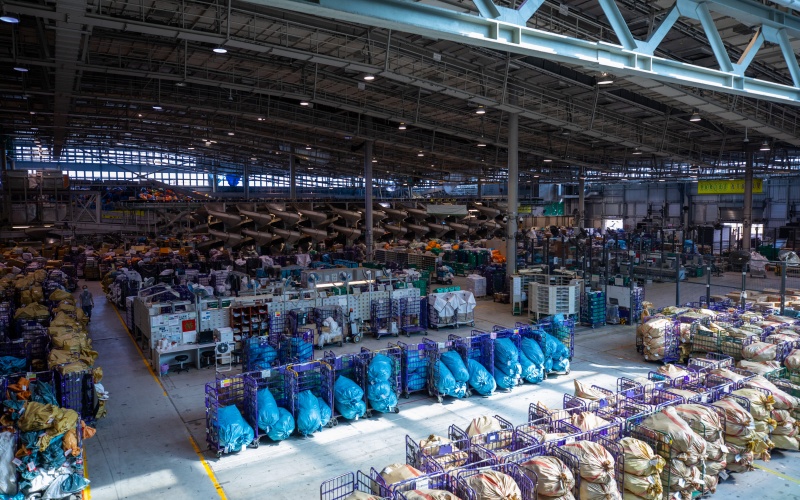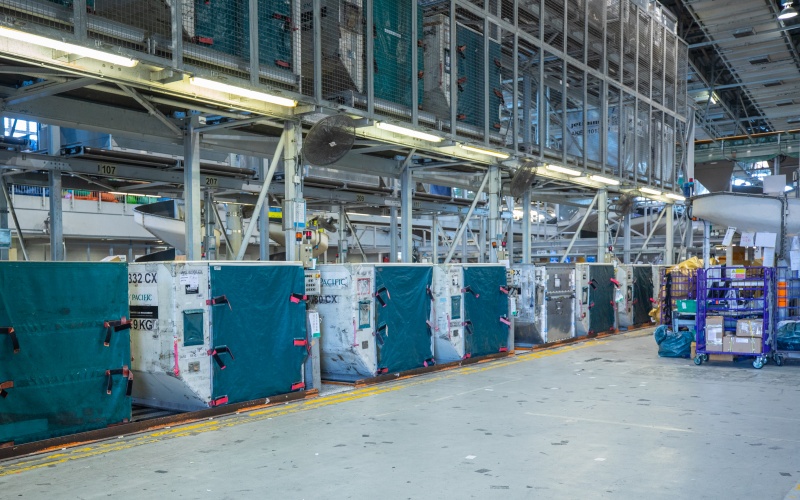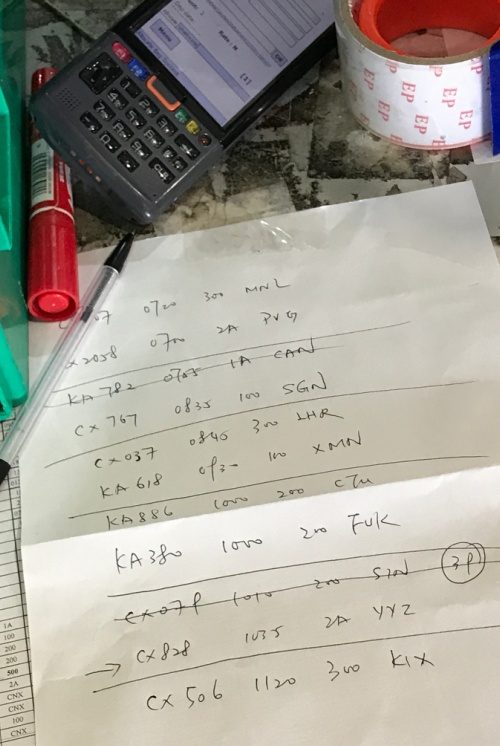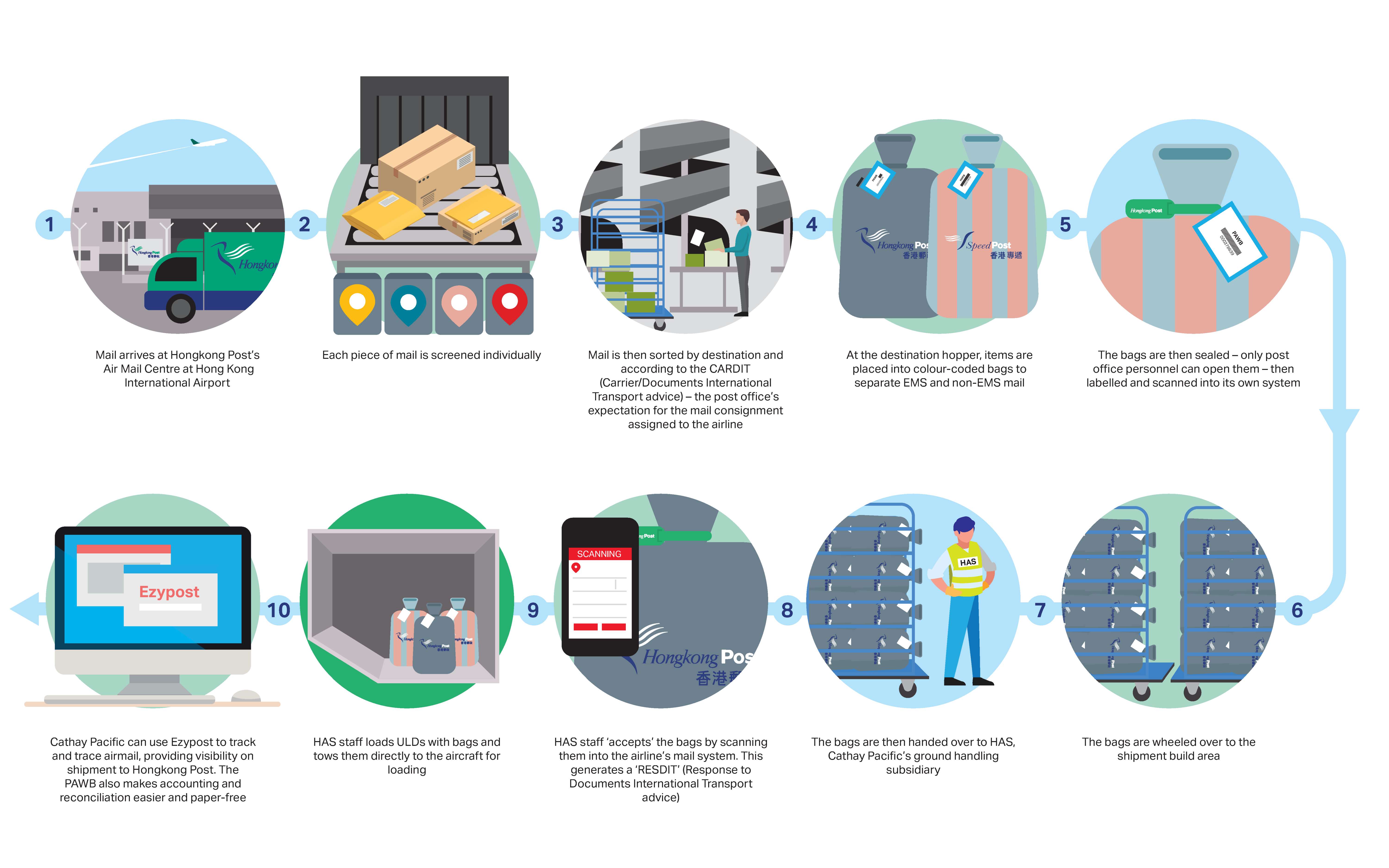According to ICAO, air cargo carries around 80 per cent of the world’s cross-border, business-to-consumer e-commerce. As consumers buy more online each year, quick delivery times and the expectation that orders can be tracked from warehouse to doorstep have become a vital part of the online retail experience.
Most e-commerce shipments go by air simply because it is fast. But these are competitive skies; newer operators that have only ever known e-commerce’s demands are vying for space with an air cargo industry that is still shedding its dependency on paper and embracing digitalisation. This extends to post offices too. They fulfil around 70 per cent of the world’s e-commerce, and come with legacy processes that predate aviation.
Writing earlier this year, IATA Manager, Cargo, Mail and E-commerce Operations and Standards Andre Majeres: ‘If the industry wants to stay competitive, processes and documentation need to move into the digital era. We must not only partner with all the actors in the supply chain but also digitally blend together.’

That means an end to old manual processes and systems that operate in isolation from each other. The failure to adapt to these mail track and trace requirements of e-commerce is obvious, as Hongkong Post’s Assistant Postmaster General (Business Development) Patrick Lin outlines: ‘The e-commerce industry puts a lot of emphasis on tracking. If you don’t provide tracking, they will not use your service.’
One of the issues is that airmail is segregated from and managed in a different way to air cargo, which creates practical difficulties and blind spots for both post offices and their airline partners. And it’s not just a question of post offices losing visibility when mail is in an airline’s care; airlines are not completely aware of what mail they are carrying – or indeed how much.
Pascal Lai is Cathay Pacific’s Cargo Products Manager. He says: ‘First of all, we don’t manage very much of the mail operation (see illustration) and the process is very manual. We just don’t have visibility of how well we are doing in terms of the services we provide.’
And that’s important because post offices award airlines contracts based on their performance. As such, Lai’s team and Hongkong Post have been piloting a new programme called Mail as Cargo, which unifies data from the post office’s system with Cathay Pacific Cargo’s system to remove some of these pain points. The gateway between will be immediately familiar to forwarders – it is the air waybill, or in this case the Postal Air Waybill (PAWB) that brings with it greater transparency, accuracy and much less paperwork.
So how does Mail as Cargo work and how has it addressed some of the main pain points for post offices?
Booking
In the past the lack of visibility has meant that is easier to defer to space allotment agreements. Now, as soon as the Post Office issues a CARDIT (Carrier/Documents International Transport advice), which is the post office’s expectation for the consignment of mail assigned to the airline, it is allocated a PAWB.
This also enables post office customers to make automated ad hoc bookings and bookings beyond the initial CARDIT. Cathay Pacific Cargo can now manage load capacity earlier, so they can make allowances where a shipment is over-tender or make unused space available to the Cargo sales team.

Mail flown as booked
Mail is rarely an end-to-end shipment, and most makes transit stops en route. Having greater visibility of the real volumes makes it easier to plan capacity for onward flights from Hong Kong for transit mail.
And for the first time, the cargo system makes it possible to identify and segregate priority from general airmail. In the event of an offload at a transit point, for example, the cargo team knows where the premium express bags are so these components can be prioritised for uplift.

Mail track and trace
As it stands, Hongkong Post does not know whether individual bags have arrived until the receiving post office scans them into their system at the final destination to tally with the anticipated manifest and its paperwork. But now each sack is linked to a PAWB number that can be tracked through the Cathay Pacific Cargo website.
This opens up a new world of data transparency with real time track and trace for post offices and the airline – all within one single system, including linking individual sacks to the ULD they were loaded in.
‘‘This project helps us to identify exactly where a mail bag is, so that helps us to track individual items,’ says Lin. ‘We can simply click on the PAWB number in our system, it will link to the Cathay Pacific Cargo website that will show all the details – the arrival time of the bag, which transit point it’s at, the handling time and so on. That’s a very great help to us.’

Mishandling resolution
In the old process it could take a long time to track down missing bags. Lin says: ‘When we go back to check with the airline, it’s often quite difficult to locate a missing mail bag because at some of the transit points it’s [hard to know] whether it’s been put aside, or whether it’s being forwarded or returned.’
But under Mail as Cargo, each bag is scanned into Cathay Pacific’s system and linked to a PAWB, which helps to speed up resolution of mishandling events because there is more data available. Lai says: ‘Say we accidentally sent a mail bag to Tokyo rather than Sydney. They will logged it as missing in Sydney, but once the bag is scanned in Tokyo, the records are automatically matched and all parties are notified in real time.’
Invoicing and settlement

Under the old system, the paperwork for the manifest, eventual reconciliation and billing is prodigious. ‘On one flight, there can be 40 to 50 pieces of paper, and you have to check them against both manifests,’ says Lai. ‘These are typed manually, and sometimes these bits of paper go missing.’
But most of if not all the information required for reconciliation and accounting is issued with the PAWB, which in turn reduces the reliance on paper. Lai adds: ‘Information is captured automatically once the flight has departed, so the billing process is in the same cargo system interface, which speeds up the accounting workflow.’
The results
The project has been a success for Cathay Pacific and Hongkong Post. Lai says: ‘What we wanted to address first was mail track and trace for acceptance. We have achieved 98 per cent now, which is higher than the standard. In terms of on-time performance, there is still room for improvement, and we have the system in place. However, space is so constrained due to the pandemic, which is affecting that.’
The potential of this system is already attracting interest from other global post offices and mail handling forwarders. It could yet become a global standard and reprioritise mail as a first class revenue opportunity.









